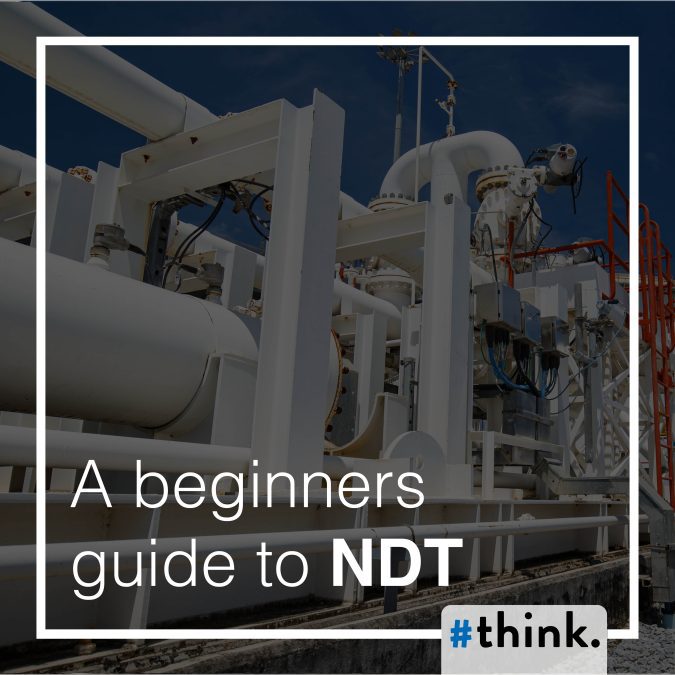Non-Destructive Testing (NDT) is an invaluable process used across various industries to evaluate the properties of a material, component, or system without causing damage. This approach ensures the longevity and reliability of critical infrastructure while maintaining safety standards.
For beginners, Non-Destructive Testing (NDT) can seem daunting due to the complexity and variety of techniques involved. The field encompasses a range of sophisticated methods, each requiring specific knowledge and expertise, from understanding the physics behind ultrasonic waves to mastering the intricacies of radiographic imaging. The technical jargon, stringent industry standards, and the precision required for accurate defect detection can be overwhelming for newcomers. Additionally, the critical importance of NDT in ensuring safety and reliability in industries like aerospace, construction, and oil and gas adds a layer of responsibility that can intimidate those new to the field. For beginners, understanding the basic methods of NDT can provide a solid foundation for appreciating its significance in industries such as aerospace, construction, manufacturing, and oil and gas.
What is Non-Destructive Testing?
Non-Destructive Testing encompasses a range of techniques used to inspect and evaluate materials, components, or assemblies for discontinuities, defects, or differences in characteristics without causing any harm to the part being tested. This ensures that the part can continue to be used after testing. NDT is essential for quality control, safety, and reliability.
Why is NDT Important?
Safety: NDT ensures that critical components in structures such as bridges, airplanes, and pipelines are safe to use.
Cost-Efficiency: By detecting potential failures early, NDT helps in preventing costly repairs and downtime.
Quality Assurance: NDT helps maintain high standards of quality in manufacturing processes.
Compliance: Many industries have strict regulations requiring regular NDT inspections.
Common NDT Methods
There are several NDT methods, each suitable for different types of inspections and materials. Here are some of the most commonly used techniques:
Visual Inspection (VT)
Visual Inspection is the most basic form of NDT. It involves examining the surface of a material or component using the naked eye or with the aid of tools like magnifying glasses or borescopes. This method is quick and cost-effective but is limited to surface defects.
Applications: Detecting surface cracks, corrosion, and misalignments in welds and components.
Ultrasonic Testing uses high-frequency sound waves to detect internal flaws in materials. A transducer sends sound waves into the material, and the reflection of these waves is analysed to identify any discontinuities.
Applications: Inspecting welds, detecting internal cracks, porosity, and measuring thickness.
Radiographic Testing (RT)
Radiographic Testing involves using X-rays or gamma rays to create images of the internal structure of a component. The radiation passes through the material and is captured on film or a digital detector, revealing any internal defects.
Applications: Inspecting welds, castings, and detecting internal voids and inclusions.
Magnetic Particle Testing (MT)
Magnetic Particle Testing is used to detect surface and near-surface defects in ferromagnetic materials. The part is magnetized, and iron particles are applied to the surface. These particles gather at areas with discontinuities, making them visible under UV light.
Applications: Detecting surface cracks and flaws in ferromagnetic materials like iron and steel.
Liquid Penetrant Testing (PT)
Liquid Penetrant Testing involves applying a liquid dye to the surface of a non-porous material. The dye seeps into any surface-breaking defects, and after a set period, the excess dye is removed. A developer is then applied, drawing the dye out of the defects and making them visible.
Applications: Detecting surface cracks, porosity, and leaks in non-porous materials.
Eddy Current Testing (ECT)
Eddy Current Testing uses electromagnetic induction to detect surface and sub-surface flaws in conductive materials. An alternating current is passed through a coil, producing an electromagnetic field. Disruptions in this field caused by defects are measured and analysed.
Applications: Inspecting tubing, surface cracks, and conductivity measurements.
Acoustic Emission Testing (AE)
Acoustic Emission Testing monitors the sound waves produced by sudden stress relief in materials. Sensors detect these emissions, which indicate the presence of cracks or other defects that may be growing.
Applications: Monitoring the integrity of pressure vessels, pipelines, and structural components.
Choosing the Right NDT Method
The choice of NDT method depends on several factors, including the material type, the nature of the defect, the part’s geometry, and the specific industry requirements. Often, a combination of methods is used to ensure comprehensive inspection.
Training and Certification
To perform NDT, technicians must undergo rigorous training and certification. Various levels of certification ensure that technicians possess the necessary skills and knowledge to conduct inspections accurately. Organizations such as the American Society for Non-destructive Testing (ASNT) provide certification programs and guidelines.
Conclusion
Non-Destructive Testing is a critical aspect of modern industry, ensuring that components and structures are safe, reliable, and comply with regulatory standards. By understanding the various NDT methods available, industries can effectively detect and address potential issues before they lead to failures. Whether you are a beginner or an experienced professional, staying informed about the latest NDT techniques and technologies is essential for maintaining high safety and quality standards.

